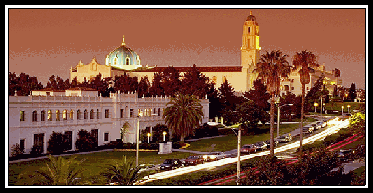|
I. Markets and Microeconomics
A. Introduction and Supply and Demand
1. Introduction
a. Microeconomics
-
Deals with the actions of
individual consumers, firms, and industries
-
Concerned with prices and quantities of inputs and
outputs - deals with strategic and tactical decisions by firms and
individuals
.
b. Macroeconomics
-
Deals with larger economic
environment
-
Concerned with overall level of
economic activity, interest rates, unemployment, inflation,
exchange rates - deals with the setting in which business occurs
.
.
.
.
.
.
.
.
2. Supply and demand
a. Demand
- Concerned with buyers or consumers of a product
- Relationship between the price of a good or service and the
quantity demanded, all else held constant
(1) Demand curve
.
.
.
.
.
.
.
.
.
.
.
(2) Law of Demand
(a) Substitution
effect - change in price makes good more or less
expensive relative to other goods
.
.
.
(b) Income effect
- change in price affects consumers' purchasing power
.
.
.
(3) Changes
(a) Change in quantity demanded
.
.
.
.
.
.
.
.
.
.
(b) Change in demand
.
.
.
.
.
.
.
.
.
.
(4) Nonprice factors affecting demand
(a) Tastes and preferences
Ex. -
.
.
.
(b) Income
i) Normal good - more of the good is demanded as
income or wealth increases
Ex. -
.
.
ii) Inferior good - less of the good is demanded as
income or wealth increases
Ex. -
.
.
(c) Prices of related goods
i) Substitutes - use one good instead of another
Ex. -
.
.
ii) Complements - use goods together
Ex. -
.
.
(d) Future expectations
Ex. -
.
.
(e) Number of consumers
Ex. -
.
.
.
b. Supply
- Concerned with sellers or the producers of a product
- Relationship between the price of a good or service and the
quantity supplied
.
(1) Supply curve
.
.
.
.
.
.
.
.
.
.
.
(2) Law of Supply
.
(3) Changes
(a) Change in quantity supplied
.
.
.
.
.
.
.
.
.
.
(b) Change in supply
.
.
.
.
.
.
.
.
.
.
(4) Nonprice factors affecting supply
(a) Technology
Ex. -
.
.
(b) Input prices
Ex. -
.
.
(c) Prices of related goods
i) Substitute production - produce one good instead
of another
Ex. -
.
.
ii) Complementary production - produce goods together
Ex. -
.
.
(d) Future expectations
Ex. -
.
.
(e) Number of producers
Ex. -
.
.
.
c. Equilibrium
.
.
.
.
.
.
.
.
.
.
(1) Shortage
.
.
.
.
.
.
.
.
.
.
(2) Surplus
.
.
.
.
.
.
.
.
.
.
.
d. Market changes
(1) Changes in demand
(a) Increase in demand
.
.
.
.
.
.
.
.
.
.
.
(b) Decrease in demand
.
.
.
.
.
.
.
.
.
.
.
(2) Changes in supply
(a) Increase in supply
.
.
.
.
.
.
.
.
.
.
.
(b) Decrease in supply
.
.
.
.
.
.
.
.
.
.
.
(3) Changes in demand and supply
.
.
.
.
.
.
.
|


